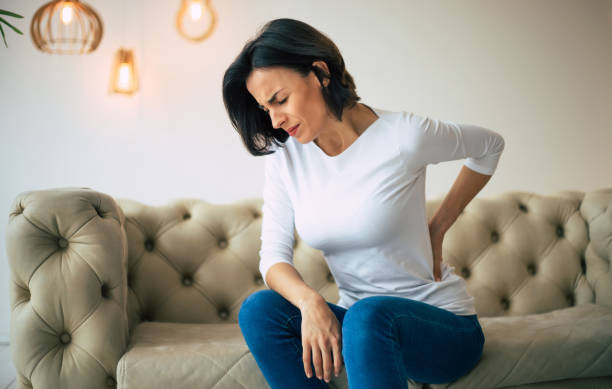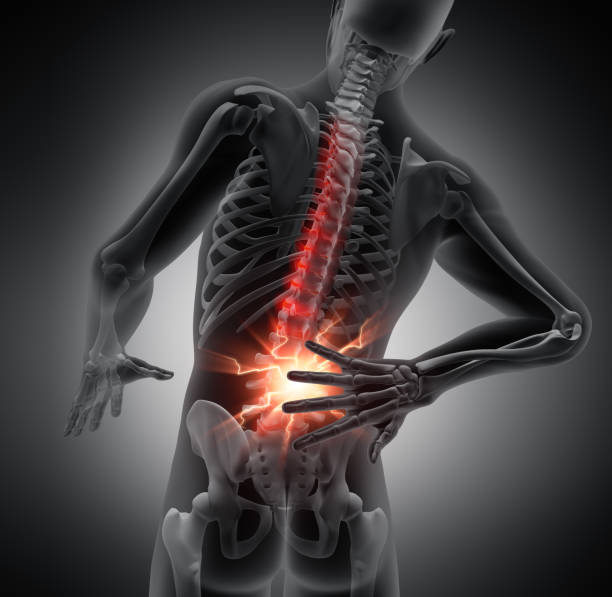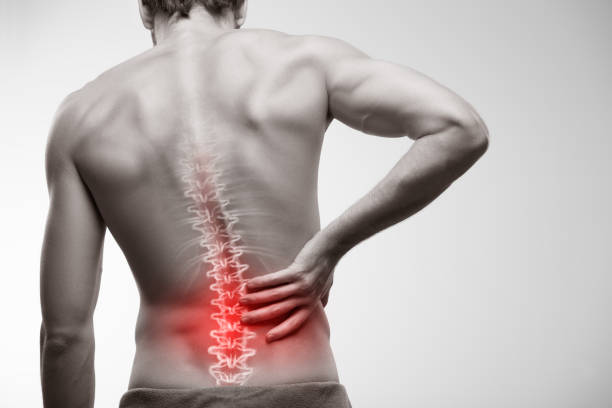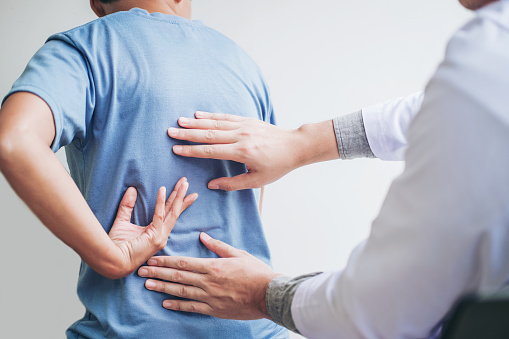
Note: This article was reviewed by a registered medical professional.
Introduction
The COVID-19 global pandemic led to a rise in health concerns among the general public and administrative bodies. Safety measures and guidelines were generated to contain the virus and prevent its spread. One such measure was remote/online studying and working. Thousands of students and office employees were required to carry out tasks from their homes. Online working and sitting for a longer duration led to a rise in the risk and prevalence of lower back pain among these individuals. While prolonged sitting is inevitable in the current situation, individuals can opt for healthy lifestyle changes. These changes include exercise and maintaining a correct posture to prevent lower back pain.
What Causes Lower Back Pain?
Lower back pain accounts for the most common health ailment concerning musculoskeletal conditions. Approximately 84% of all musculoskeletal disorders are characterized as lower back pain. A person is diagnosed with chronic lower back pain if the pain lasts longer than the standard duration of three months. Lower back pain has a significant negative impact on an individual’s productivity, performance, and functional capacity. Lower back pain is a challenge for individuals involved in occupational activities. This contributes to the increasing disease burden and influences economic growth.

Different structures in the back’s lumbar region elicit lower back pain. Lower back pain is not a condition but a symptom of underlying pathology. The pain may arise due to abnormality in the lumbar spine’s nerves, muscles, and intervertebral spine. The primary causes of lower back pain are listed below.
- The mechanical causes are the most common etiological factors underlying lower back pain. Muscle injury, herniation of the intervertebral disc, and trauma to the ligaments and fascia structures give lower back pain. These structures may compress the nerve roots of the lumbar region and elicit lower back pain.
- Age-related degeneration of the bones and joints of the spine also gives rise to lower back pain.
- Inflammation and infection of musculoskeletal and fascial structures of the back’s lumbar region are also responsible for causing lower back pain.
- Rare causes of lower back pain include the presence of a tumor or other space-occupying lesions. These lesions can compress the nerve roots of the lumbar spine and give rise to lower back pain.
Poor posture for a long duration is the primary and most prevalent culprit of lower back pain. Hunched back or forward bending of the spine elicits muscle strain and impairs the blood flow towards the muscles. Over a certain period, the muscles become stiff and weak, giving lower back pain. Postural stress also affects the intervertebral discs and the corresponding nerve roots of the spine. Lack of lumbar support while sitting also makes an individual susceptible to lower back pain.

How To Treat Lower Back Pain?
The treatment of lower back pain comprises both clinical and subclinical procedures. At-home treatment of lower back pain includes the following.
- One should take intermittent rest between periods of strenuous activity. Short periods of rest are beneficial for relieving lower back pain.
- An individual shall refrain from activities and posture that precipitate lower back pain. Gentle muscle stretching is an effective method for reducing lower back pain.
- Heat and ice therapy is a standard method for achieving short-term relief from lower back pain. This improves blood flow towards muscles, facilitates muscle relaxation, and accelerates healing.
- Long-term use of non-steroidal anti-inflammatory drugs (NSAIDs) such as aspirin and ibuprofen also improve lower back pain, however, only for a short duration.
Non-pharmacologic and clinical treatment approaches for the lower back include spinal manipulation and psychotherapy. Lower back pain treatment goals include pain relief, restoration of spinal mobility, and prevention of the recurrence of lower back pain. Exercises for muscle stretching and ergonomic postural adjustment are two highly effective measures for managing, treating, and preventing lower back pain.
Exercises For Lower Back Pain
Exercises play a significant role in relieving muscle strain and improving blood flows towards the muscles. This accelerates the recovery process and improves lower back pain. Activities that are targeted towards the lower back muscles are listed down below. These exercises can help individuals avoid lower back pain and remain healthy while working from home.
- Knee to chest stretching – the exercise involves a person lying on a flat surface. This is followed by pulling one or both the knees up to the chest and holding for about 30-60 seconds.
- Cat-camel stretching – An individual should get on both hands and knees to perform this exercise. This is followed by arching the back, the cat position, for about 5-10 seconds. The person then returns to the initial posture. After that, the head is tilted upwards, and the back is curved towards the surface for about 5-10 seconds. This is known as the camel position. An individual alternates the postures throughout the exercise.
- Piriformis stretch – this exercise is targeted at the piriformis muscle of the gluteal regions. Activity is initiated by lying flat on the floor and holding the knee of the affected site. Do it for about 15-30 seconds. The exact process is repeated for the other leg.

What Is Ergonomic Postural Adjustment?
Ergonomic posture defines the posture of a person while sitting. Ergonomic postural adjustment while sitting and working for more prolonged durations. They prevent postural stress on the anatomic structures in the lumbar region. Adequate lumbar support while posing for a longer duration also assists in maintaining the correct posture. Lumbar support fills the space between the lumbar spine’s inward curvature and the seat’s surface. The key features of ergonomic postural adjustment are as follows.
- An individual should be looking straight ahead with their chin parallel to the surface.
- Both the shoulders must be even and straight.
- The alignment of the spine should be neutral and in its natural position. An individual should refrain from overemphasizing the curvature of the spine.
- An individual should keep both arms by the side, with the elbow joint forming a right angle.
- Both the hips and knees should be even while sitting. Knees should be straight and bent sufficiently.
- Feet must be even and kept flat on the surface. This assists in equal distribution of the body weight.
When To See A Doctor?
A person shall visit a health professional if the lower back pain lasts longer than two weeks and/or is accompanied by the following signs.
- Fever
- Loss of control over micturition
- Lower back pain during the night
- Inexplicable weight loss
- History of bone degeneration
Conclusion
Lower back pain manifests as persistent incorrect posture, muscle strain, nerve compression, and degenerative changes in the back’s lumbar region. Over-the-counter medications and spinal manipulation are treatment techniques that improve lower back pain. However, an individual should opt for ergonomic postural adjustment and stretching exercises to avoid lower back pain while working from home. Chairs or other seating accessories should provide adequate lumbar support to maintain the correct posture and prevent the onset of lower back pain.
